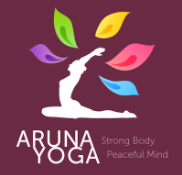Back-to-Backs: The Science & Study Behind its Importance
“If you would seek health, look first to the spine.”
—Socrates
History
Did you know that the study of the spine and its health dates back to Ancient China and Ancient Greece? The Father of Modern Medicine, Hippocrates, observed and documented spinal “manipulations” in his pioneering work Corpus Hippocrateum, where he states, “Get knowledge of the spine, for this is the requisite for many diseases.” And the spine is just one of the many important parts that make-up our back.
Your back is one of the most important muscles in your body. Its capacity as a muscle is what carries your upper body throughout the entire day. It is for this very reason your back is also susceptible to a lot of aches and pains that can affect your mobility and eventually the rest of your body.
How do backs go bad?
In America, millions below the age of 45 experience back pain severe enough to be a cause for disability, and the causes for this are so diverse. They can range from physical strain during exercise, to something as simple as sitting on a chair for extended periods of time each day.
The bottomline is: back pain exists often because something is not aligned in your discs (bones), muscles, nerves, and how they fit together for movement.
Science & Studies say...
Part of the campaign was to study how long the average working person in Ireland would spend sitting down each day, and produced results showing the average time was at around 7.3 hours each day, sitting down.
IHF’s Head of Health Promotion, Information and Training, Janis Morrissey shared, "Sitting for long periods of time increases your risk of heart disease and stroke. Even more worryingly, there is now increasing evidence that the positive health benefits of exercise may not entirely counteract the negative effects of a mostly sedentary lifestyle."
Further study will show you that constant strain on your back (no matter how intensive or minimal) can lead to headaches, poor back posture, and compression or a tight chest. Also, without proper care, weak back strength will encourage weak core strength as well, and as our bodies age we can become more and more susceptible to injury even with our daily habits.
The reality is, the number of people and the amount of time they spend seated for long hours is increasing, so ensuring you do all you can to maintain good back health is vital — for you.
What should be done?
If you are experiencing back pain right now or are in the space of prevention from its developing in the future, there are several options you can consider in which all involve movement. Toss out the idea that protection from back strain and pain is possible if you try to minimise your daily movement.
A lack of bodily movement can actually worsen pain, cause stiffness, the de-conditioning of your bones and muscles, and an overall weakness of the body. The fact of the matter is: movement is a necessity for mobility and health.
Next week, I will be sharing on the blog more practical tips and simple poses for how to maintain your back health, especially considering back health for those who are developing scoliosis in their youth, due to long hours of sitting and carrying heaving bags.
For proper prevention and maintenance of your back’s health, I invite you to join me and Teacher Mary Farrelly for a new weekly course for Better Back Health beginning Monday, March 25th, from 8:30 - 10:00PM. I hope to see you there, and stay tuned for next week’s post.
